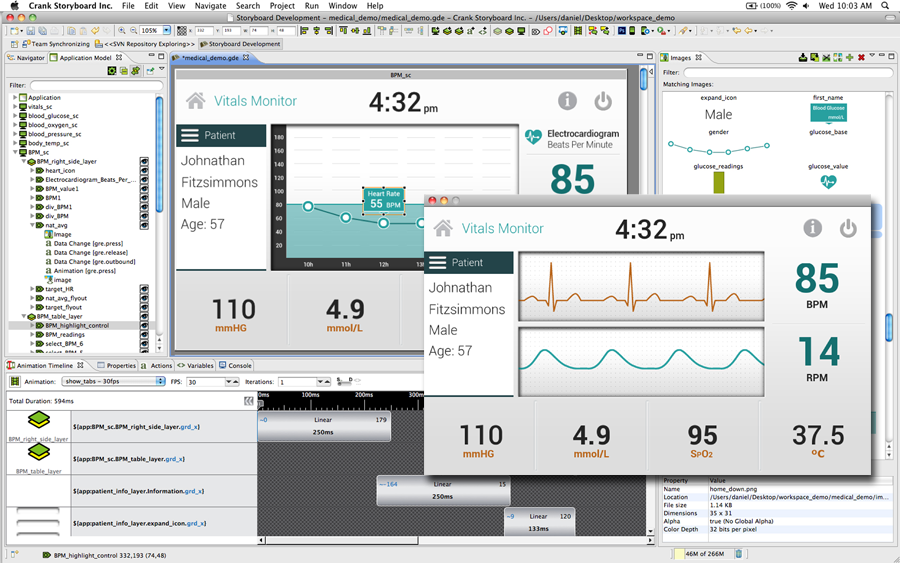Crank Storyboard Suite is composed of two components, Storyboard Designer and Storyboard Engine, that work together to provide a complete graphical user interface development and deployment environment targeted specifically at the needs of embedded user interface developers.
 |
Storyboard Designer provides a desktop-based (Windows/Mac/Linux) graphical development environment that provides a drag and drop approach to building the user interface using elements familiar to graphic designers, Photoshop PSD content, PNG and JPG image files, and standard TrueType fonts.
When a design is ready for testing, it can be simulated in the desktop environment or easily (really, really easily!) deployed to an embedded target device. Storyboard Designer does not produce code, but produces a data model that is independent of the operating system or processor that will execute the UI. This data model is interpreted by Storyboard Engine.
Storyboard Engine is an embedded target specific rendering engine that is highly portable and optimized for a specific combination of CPU, operating system, and rendering technology.
These two technologies, Storyboard Designer and Storyboard Engine, provide a highly efficient way of transforming user interface prototypes created by graphic designers, using tools such as Photoshop, into working applications ready for deployment.